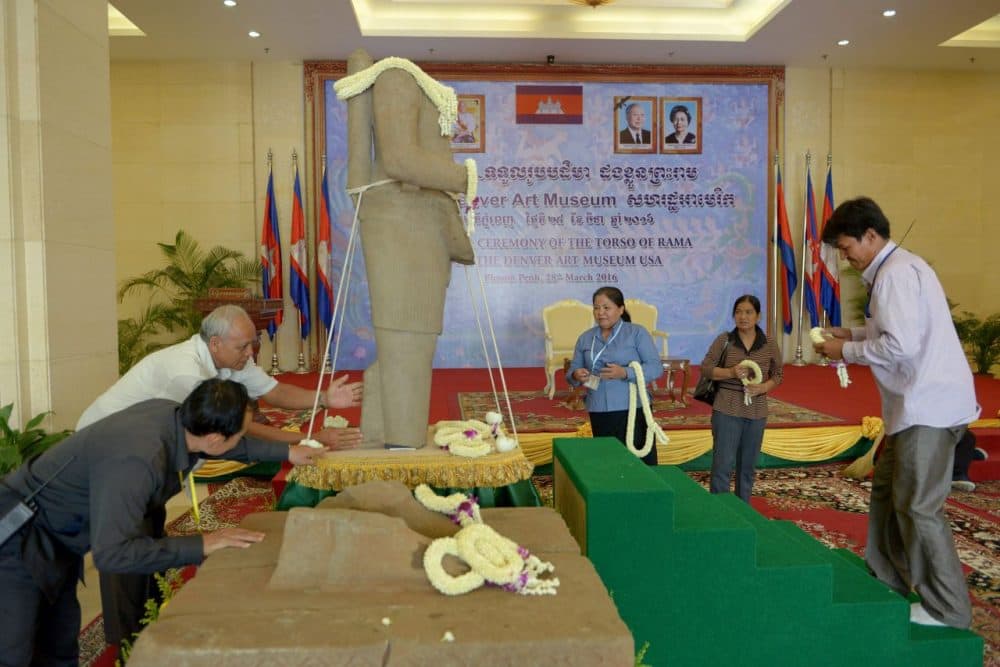Advertisement
Tracing The DNA Of Looted Artwork
Resume
Earlier this week, the Denver Art Museum returned a 10th century Hindu god statue to its rightful owner: Cambodia. The statue was stolen from a temple during Cambodia's civil war in the 1970s and brought to the U.S. three decades ago.
The museum became aware of the issue when it was contacted by Cambodian authorities. Jane Milosch, director of the Provenance Research Initiative of the Smithsonian, speaks with Here & Now's Jeremy Hobson about museums' responsibility to determine the rightful ownership of art objects, and what it means to a country and culture when artwork is stolen.
Guest
- Jane Milosch, director of the Provenance Research Initiative at the Smithsonian.
This segment aired on March 30, 2016.